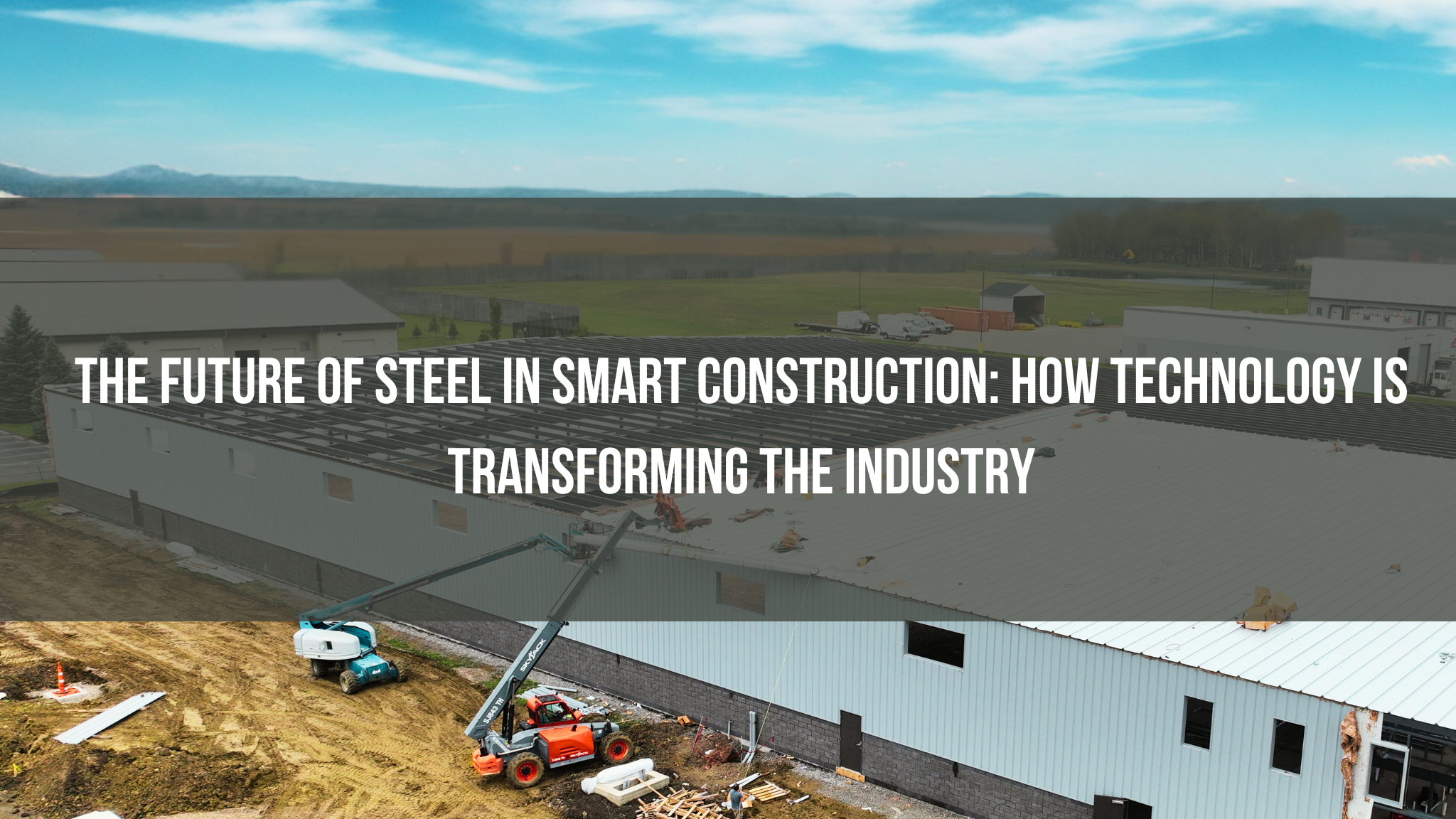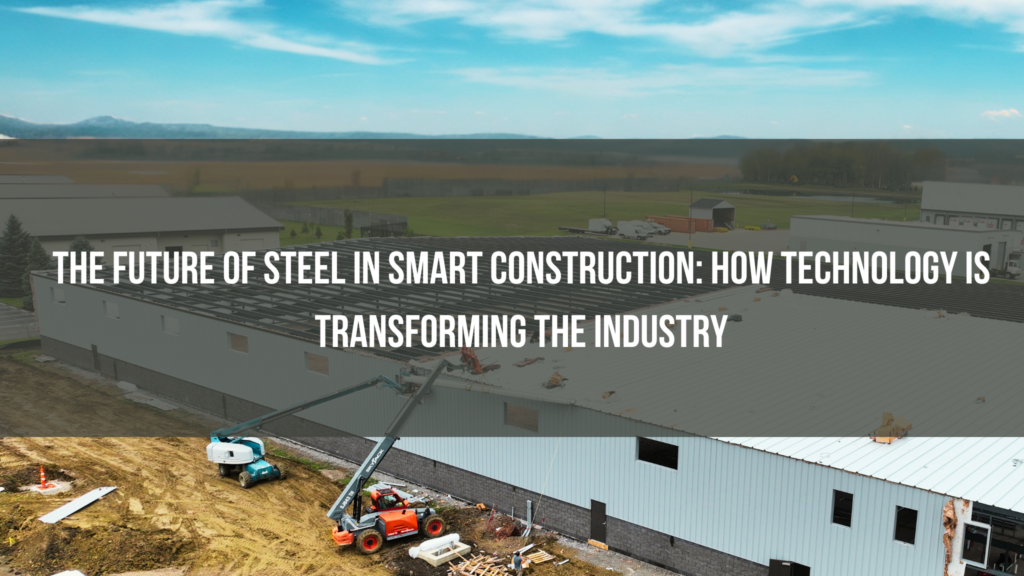
The Future of Steel in Smart Construction: How Technology is Transforming the Industry
The construction industry is undergoing a significant transformation, and steel construction is at the forefront of this shift. As technology continues to advance, the way the steel construction industry designs, constructs, and manages buildings is evolving rapidly. Smart construction innovations such as prefabrication, Building Information Modeling (BIM), and automation are revolutionizing steel construction, making the process faster, more efficient, and more precise than ever before.
In this article, we’ll explore how these technologies are shaping the future of steel construction and what it means for the industry moving forward.
Table of Contents
1. Prefabrication: Speed, Precision, and Cost Savings
One of the most significant advancements in steel construction is the rise of prefabrication. Prefabrication involves manufacturing building components off-site in a controlled environment, which can then be assembled quickly on-site. For steel construction, this process offers several key advantages:
- Speed: Prefabricating steel components off-site allows for faster construction timelines. While the building site is being prepared, steel components are already being manufactured, reducing overall project time.
- Precision: Prefabrication ensures that steel components are built with high precision and consistency, which minimizes errors during assembly and improves structural integrity.
- Cost Savings: By reducing on-site labor and construction time, prefabrication helps lower costs. Additionally, fewer mistakes and rework mean fewer wasted materials, contributing to a more efficient project.
2. Building Information Modeling (BIM): Enhancing Collaboration and Efficiency
Building Information Modeling (BIM) is a game-changer in the world of construction, and its impact on steel construction is profound. BIM is a digital representation of a building’s physical and functional characteristics, allowing for better collaboration, visualization, and management throughout the project lifecycle. Here’s how BIM is transforming steel construction:
- Improved Collaboration: BIM enables architects, engineers, contractors, and clients to work together on a single digital platform. This streamlines communication, reduces misunderstandings, and ensures that everyone is on the same page during the design and construction phases.
- Detailed Visualization: BIM provides 3D models that allow stakeholders to see how the steel components will fit into the overall structure. This helps identify potential issues before they occur, saving time and reducing costly changes during construction.
- Enhanced Efficiency: BIM allows for more accurate material estimation and better project planning. For steel construction, this means reducing waste, optimizing material use, and ensuring that components are manufactured to exact specifications.
3. Automation: Streamlining the Construction Process
Automation is another key trend shaping the future of steel construction. From robotic welding and automated assembly to drone inspections and AI-driven project management, automation is streamlining every phase of the construction process. Some key innovations include:
- Robotic Welding: Automated welding systems are being used to enhance precision and speed in steel construction. These systems can work around the clock with a level of consistency and accuracy that human workers cannot achieve, reducing errors and increasing productivity.
- Automated Assembly: Robotics are also playing a role in assembling steel components. Automated cranes and robotic arms can move and position large steel sections more efficiently and safely than traditional methods.
- AI-Powered Project Management: Artificial intelligence (AI) is being used to improve project management by predicting potential delays, optimizing schedules, and identifying the most efficient workflows. In steel construction, this ensures that projects stay on track and resources are used effectively.
4. Sustainability and Smart Steel Buildings
Another important aspect of smart construction is the focus on sustainability. Steel is inherently eco-friendly due to its recyclability, and smart construction technologies are further enhancing the sustainability of steel buildings. Some examples include:
- Energy-Efficient Designs: Smart building designs can incorporate energy-efficient solutions like solar panels, smart HVAC systems, and advanced insulation, all while using steel’s structural flexibility to create buildings that consume less energy.
- Environmental Monitoring: Smart sensors can be embedded into steel structures to monitor environmental factors such as temperature, humidity, and energy consumption. This data can then be used to optimize building performance, making steel buildings more energy-efficient and sustainable.
- Recyclability and Modular Design: Steel’s ability to be recycled and reused makes it a key player in the circular economy. Smart construction techniques are making it easier to design modular steel buildings that can be easily disassembled and repurposed, reducing waste and minimizing environmental impact.
5. Emerging Trends: 3D Printing and Smart Steel Materials
In addition to the technologies discussed above, several emerging trends are shaping the future of steel construction:
- 3D Printing of Steel Components: While still in its early stages, 3D printing technology has the potential to revolutionize the construction industry by allowing for the on-site fabrication of complex steel components.
- Smart Steel Materials: Research is ongoing into developing steel materials with advanced properties, such as self-healing or energy-generating capabilities. These materials could significantly enhance the performance and sustainability of steel structures.
Conclusion
The future of steel construction is bright, with technology playing a pivotal role in shaping its development. Innovations like prefabrication, BIM, and automation are already making steel construction faster, more efficient, and more precise. As we continue to embrace these smart construction technologies, we can expect to see even greater advancements that will further transform the industry and make steel an even more attractive choice for builders and developers. Disclaimer: The information provided in this article is intended for general knowledge and informational purposes only. It does not constitute professional advice or recommendations. Readers should consult with qualified professionals for advice tailored to their specific circumstances.
Why Choose Us?
Solid State Steel prides itself on a consistent reputation, built on years of expertise in material and construction. Our commitment to quality, innovation, and customer satisfaction has made us a trusted name in the industry. Whether you’re embarking on a new construction project or seeking advice on material selection, our knowledgeable team is here to support you every step of the way. We look forward to continuing to serve our clients with the highest standards of excellence and reliability. Lets create a custom building that is tailored to your exact need. We work in both residential and commercial capacities, so check out some of our past projects to get inspired!

